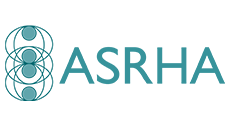What's New?
STI testing and management advice has changed
Here's what you need to know
Minor Review (2024 – 2025)
A minor review of these Guidelines was undertaken in 2024 – 2025, with updates made to the following sections:
- Anogenital ulcers
- Anorectal syndromes
- Bacterial vaginosis
- Mpox
- PID
- Pregnant people
- Skin rash and lesions
- Syphilis
Minor Review (2023 - 2024)
A minor review of these Guidelines was undertaken in 2023-2024, with updates made to the following sections:
- Aboriginal and Torres Strait Islander People
- Chlamydia
- Genital dermatology
- Hepatitis C
- Mycoplasma genitalium
- People who use drugs
- Regional and remote populations
- Syphilis
- Pregnant people
Major Review (2020 - 2022)
These Guidelines were updated between 2020-2022 by a multidisciplinary group of clinical and non-clinical experts. While all sections have been updated, some have had major changes.
Key changes are summarised below. For more detail please refer to this paper in Sexual Health.
The key changes clinicians should know to inform their practice were discussed in a clinical update webinar, presented by Dr Jason Ong (Sexual Health Physician and ASHM Board Director) and Cherie Bennett (Clinical Nurse Specialist and Medical Educator). You can view a recording of this webinar below or by clicking here.
Standard asymptomatic check-up:
- HIV and syphilis testing should be included whenever STI testing is indicated. This will help us work towards the goal of eliminating HIV transmission and combat the concerning rise of syphilis notifications in Australia.
- Doxycycline is the recommended treatment for trachomatis in all anatomical sites.
- To improve antibiotic stewardship, immediate treatment is not recommended for all sexual contacts of chlamydia – instead, offer testing of exposed anatomical sites and await results.
- Special treatment situations when first-line therapy fails or is contraindicated have been updated in response to rising antimicrobial resistance.
- Treatment recommendation has been updated.
- In line with national guidelines, pan-genotypic medicines are recommended and HCV genotyping is no longer required for treatment.
- Information on populations at risk has been updated.
- It is important to note that current injecting drug use is not a barrier to treatment.
- Among reports of increasing drug-resistant shigellosis among MSM, there is a need for expert local advice and stool culture when treating diarrhoea in MSM. This section is an important new addition to the Guidelines.
- Primary care clinicians are encouraged to think about STIs when examining, testing and managing clients with rashes, lumps and lesions that might not be on the genital skin.
- This section now includes causes and treatment options for non-STI related conditions of the anogenital skin, such as autoimmune disorders, malignancies, trauma, and inflammatory conditions like psoriasis and eczema. Practical advice like the use of photography for clinical monitoring or electronic referrals to specialists has been included.
Aboriginal and Torres Strait Islander people:
- The importance of culturally safe care is emphasised. Practice tips are added to encourage greater uptake of relevant MBS item numbers and the involvement of Aboriginal health workers where possible.
- This section is now in a “time from assault” framework as the assessment, management, and ongoing support will differ depending on how recently the assault occurred.
- The consideration for post-exposure prophylaxis (PEP) for STIs has been removed with the only PEP (after risk assessment) recommended for HIV, HBV and pregnancy.
- There is a new entry regarding historical sexual assault as the primary care clinicians may be the first to hear about childhood abuse. Clinicians should facilitate psychological support where necessary, and encourage their patients to involve the police and/or sexual assault support services when appropriate.
- People in custodial settings may engage in different sexual practices (compared to their usual practices) and shared injecting drug use (due to lack of access to needle and syringe programmes). All people in custodial settings should be offered screening for STIs and blood-borne viruses regularly throughout their incarceration period.
- Additional services and support are needed for people who use drugs, including prescription of naloxone for people who use opioids, referral to harm reduction services such as needle-and-syringe programmes (NSP), peer-based services, and drug and alcohol services. Offering PrEP to this population is important.
- This section has been updated to reflect changes in laws regarding sex work in some jurisdictions and to align with the information regarding laws and sexual health support available on the national peak Australian Sex Worker Association website.
Trans and gender diverse people:
- A major update to this section has incorporated current trans and gender diverse affirming language and addressed the deficiencies in published literature in this area.
- Attention to anatomy and sexual practices, rather than gender, with respect to acquisition and sites of STIs, and the use of inclusive language, has been incorporated across the guidelines.
- We recommend careful history taking regarding preferred anatomical terms and sexual practices/partners and to avoid assumptions: discussing sexual practices and anatomy using words patients are comfortable with is key.
- We include a discussion of other issues that may be relevant to some trans and gender-diverse people, including the availability of PrEP and the need for effective contraception.
For further information please refer to this article in Sexual Health. When citing the Australian STI Management Guidelines, please reference this paper.


